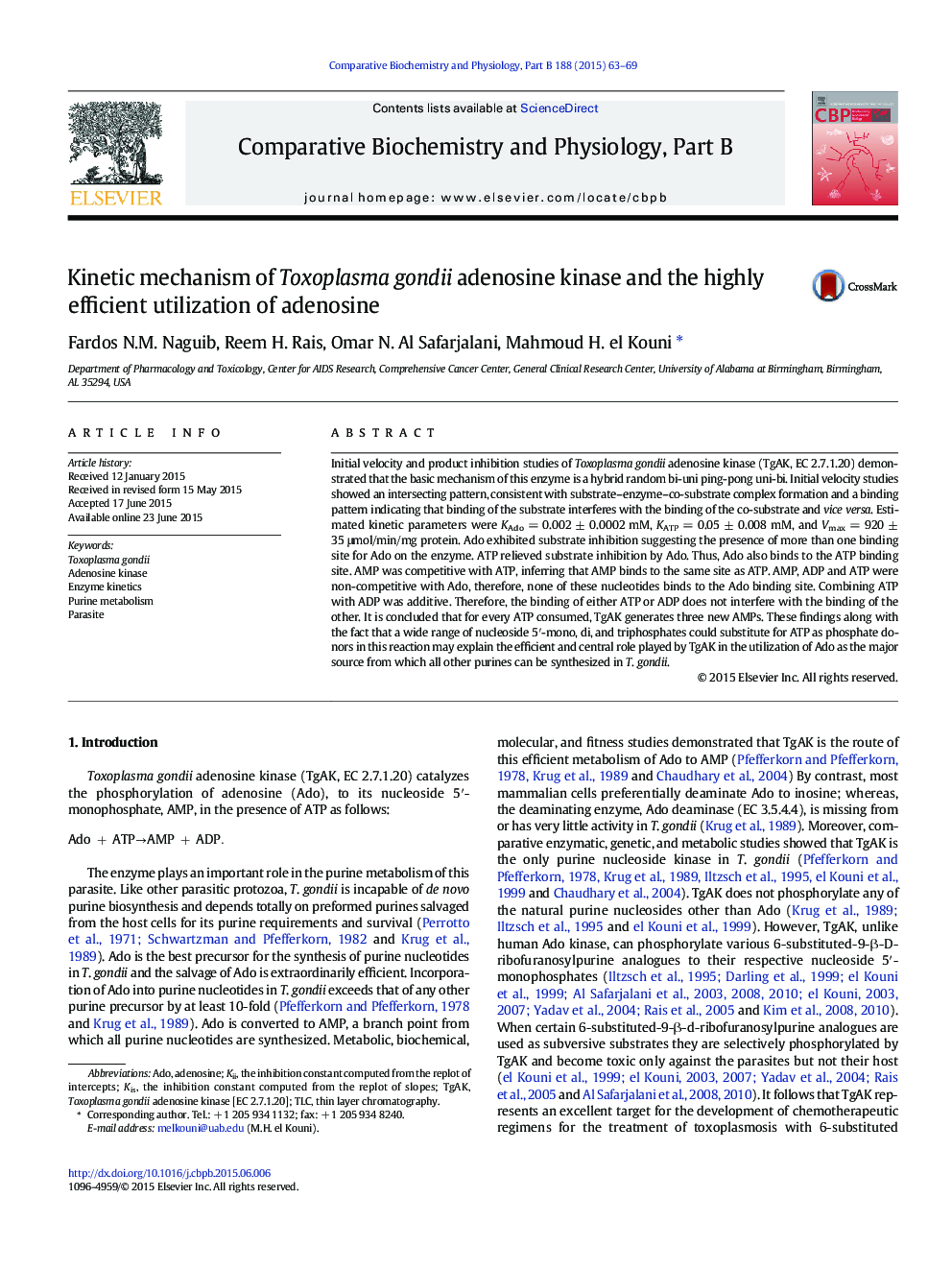| Article ID | Journal | Published Year | Pages | File Type |
|---|---|---|---|---|
| 1975184 | Comparative Biochemistry and Physiology Part B: Biochemistry and Molecular Biology | 2015 | 7 Pages |
Initial velocity and product inhibition studies of Toxoplasma gondii adenosine kinase (TgAK, EC 2.7.1.20) demonstrated that the basic mechanism of this enzyme is a hybrid random bi-uni ping-pong uni-bi. Initial velocity studies showed an intersecting pattern, consistent with substrate–enzyme–co-substrate complex formation and a binding pattern indicating that binding of the substrate interferes with the binding of the co-substrate and vice versa. Estimated kinetic parameters were KAdo = 0.002 ± 0.0002 mM, KATP = 0.05 ± 0.008 mM, and Vmax = 920 ± 35 μmol/min/mg protein. Ado exhibited substrate inhibition suggesting the presence of more than one binding site for Ado on the enzyme. ATP relieved substrate inhibition by Ado. Thus, Ado also binds to the ATP binding site. AMP was competitive with ATP, inferring that AMP binds to the same site as ATP. AMP, ADP and ATP were non-competitive with Ado, therefore, none of these nucleotides binds to the Ado binding site. Combining ATP with ADP was additive. Therefore, the binding of either ATP or ADP does not interfere with the binding of the other. It is concluded that for every ATP consumed, TgAK generates three new AMPs. These findings along with the fact that a wide range of nucleoside 5′-mono, di, and triphosphates could substitute for ATP as phosphate donors in this reaction may explain the efficient and central role played by TgAK in the utilization of Ado as the major source from which all other purines can be synthesized in T. gondii.
